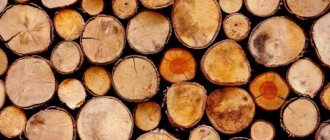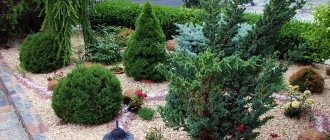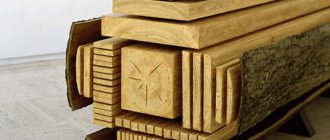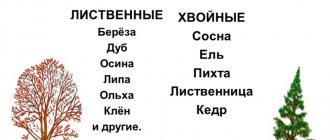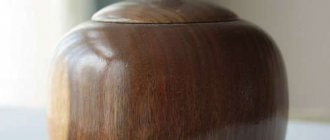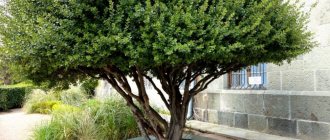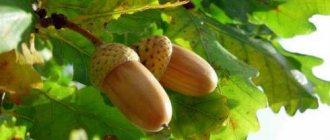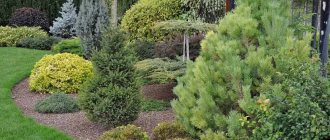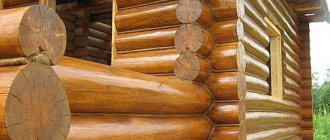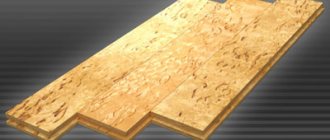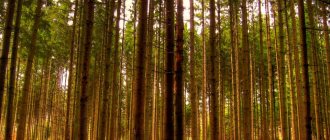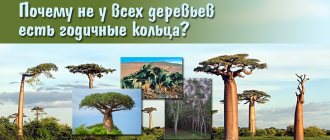iron tree
Among the very first tools that man began to use at the very dawn of civilization were not only bone and stone, but also wooden objects. Even then, still not knowing anything about such a concept as hardness, people noticed that different trees and shrubs have different wood in strength, the force with which tools made from it can influence other objects without being damaged or destroyed. This is where people came to the concept of hardness. Trees that had the highest indicators for this characteristic were called “iron”.
It should be noted that in different areas, on different continents and continents, this name meant completely different tree species. But for the most part, in addition to high strength, they also had other similar parameters. In particular, the wood of these tree varieties:
- does not float on the surface or in the water column, but sinks to the bottom and drowns;
- these trees are very rarely affected by various diseases, harmful insects and other biological pests;
- it is difficult to process and so on.
Today, thanks to the high development of science and technology, people have penetrated into the most intimate secrets of nature, gained knowledge about biological and physical laws, and learned to determine the hardness of various materials. In particular, the following two main methods are used for testing wood: Brinell and Rockwell. They got their name from the names of the scientists who developed them and put them into practice. In the first case (according to Brinell), to diagnose the test sample, it is impacted using a special ball, and in the second (according to Rockwell) using a diamond tool. After the test is completed, a depression of varying depth remains on the surface of the material (wood). The hardness of the tree is judged by its size.
For some types of wood, this parameter is so high that it exceeds the values of a similar characteristic for metals and their alloys. The wood of such trees, called “iron” trees, is used by people to solve various problems. It was used in the past and is being produced now:
- nails;
- furniture;
- structural parts and assemblies of complex machines and units;
- construction fixtures and elements, and so on.
The strength indicator of different trees of the same variety is influenced by:
- age, the older the tree, the stronger it is, since wood loses moisture over time and “dries out”;
- climatic characteristics of the place of growth, in arid regions the hardness of wood will be higher than in humid ones, at low temperatures, the growth of seedlings and planting material slows down, which also leads to an increase in hardness;
- the method that craftsmen used when cutting wood;
- the section of wood from which the sample was made, the hardness at the surface, directly under the bark and in the core of the trunk differs, at the bark it is higher.
A high hardness index can be both an advantage and a disadvantage of wood, depending on the intended method of use. In most cases, ironwood wood has a very beautiful texture and unusual color, so it is especially in demand in the production of various furniture and furnishings. As positive factors inherent in them and associated with the high hardness of wood, one can note increased wear resistance, low maintenance requirements, no need for additional processing or impregnation with pest control agents. The negative aspects include: the significant cost of the material, difficulty in processing, difficulties in assembly, fixing furniture on the wall, and repairs.
Merbau
This is not the hardest, but judging by the combination of other performance qualities, it can be said to be the most practical breed. Previously, this tree was used in the construction of sea ships. This is due to the fact that the material is resistant to moisture and also does not dry out. Therefore, merbau can be stored for a long time, after which it can be subjected to heat treatments and used in construction. As already noted, trees belonging to hard wood species, such as hornbeam or beech, practically do not tolerate additional processing. But merbau steadfastly endures traditional methods of influence in order to improve individual performance qualities.
Varieties of "iron trees"
As mentioned earlier, there are many trees with high hardness ratings that are classified as “iron trees”. Among the most widely used in production, construction, and for making furniture, the following can be mentioned.
Jatoba - Brazilian cherry
In the tropical forests of Central and South America grows a tree called the South American (Brazilian) cherry. The height of individual specimens can exceed 40 m. Young shoots, pubescent with small brownish hairs, form a wide crown. The compound leaves are composed of two pointed, crescent-shaped leaves measuring 7.5 cm in length.
The South American plant is not a relative of the cherry fruit tree, which is widespread in our country. Perhaps the plant received this name because of the wood, the core of which is dark red or deep orange. After cutting, within a week it very quickly acquires a dark, brick-red hue.
Jatoba is one of the hardest species (7 Brinell points) used for making furniture and decorative elements.
Sucupira
This is another representative of the South American flora, growing in the forest thickets of Colombia, Brazil, and Venezuela. Expressive texture, small, narrow yellowish or light veins on dull reddish-brown wood, lighter towards the edges, make it easily recognizable and very decorative. In addition to high hardness and strength, the distinctive quality of sucupira is the presence in the layers of wood of oily substances that prevent the development of diseases, damage by combs and other pests.
Hardness of about 5.6 points complicates the process of cutting wood, which requires strict adherence to technology, failure to comply with which can lead to damage to all harvested raw materials. But the processing (sanding, polishing) is quite simple, which makes it possible to obtain from it a high-quality, beautiful parquet flooring in a wide range of colors from cocoa with milk to a burgundy shade. Products made from sucupira do not fade under the influence of ultraviolet rays and are not affected by fungus or harmful insects.
About 100 years pass from planting until the plant reaches maturity, but once the tree reaches 25 years of age, it can be processed. At this time, its trunk is almost cylindrical, devoid of side branches and shoots.
Turmoil
In the West African tropical rainforests, a very interesting tree grows, reaching 50-60 m in height, with a trunk diameter of about 1 m. The color of its wood resembles the color of a walnut, and the structure is teak. This type of wood is called mutania. It belongs to the “iron” category, since its hardness value is 5 points. However, this value is not always sufficient and in some cases it can be damaged by mechanical stress.
Muthenia wood is valued by furniture makers and builders because it does not crack or warp during the drying process, and when cut, radial rays of a violet hue “appear” on it. High hygroscopicity does not allow wood to be treated with varnish or primer. But you don’t need to do this, because it has an original natural shine. Furniture is made from muthenia wood, it is used for interior decoration, and is used in the production of parquet and veneer.
Intsia
Under the name merbau, wood of various types of intsia is widely used in European countries for the manufacture of parquet. Possessing high hardness (4.9 Brinell points), it is even suitable for laying floors in public buildings. In addition, it has increased moisture resistance, which makes it possible to use it in bathrooms, baths, and saunas.
The distribution area of Intsia is South Asia, Oceania, New Guinea, Madagascar. The plant belongs to the legume family. The height of individual specimens reaches 30-50 meters, the trunk diameter is 1.5 m. At the same time, there are practically no lateral branches on the trunk.
Merbau wood has a range of colors from light orange to yellow. After sawing, processing, and polishing, the surface of the wood becomes brownish and acquires a beautiful silver or bronze tint.
Canadian maple
The national flag of Canada is decorated with a stylized image of a maple leaf, since the sugar maple (Canadian) is a symbol of this country. Acer saccharum is a deciduous tree belonging to the Sapindaceae family. It occupies vast areas in North America. Maple also grows in our country, and recently it has been actively used in Europe as an ornamental plant to decorate gardens, parks, and public gardens.
The lifespan of one plant can be 400 years. During this time, it grows to 30-40 m in height, the thickness of the trunk reaches 1 m. The decorative appearance of the maple tree is given by its picturesque crown, consisting of small, about 11 cm in length and width, leaves of an original shape. In summer they are dark green, with the onset of autumn they acquire red, orange, and yellow shades.
In addition to its decorative properties, Acer saccharum has a sweetish-tasting sap, which can be collected in early spring and used in cooking, and durable, hard (4.8 Brinell points) wood, widely used for making furniture, expensive musical instruments, parquet, cladding panels, butts. for weapons and even bowling pins.
Yarra (eucalyptus)
In total, about 700 species of eucalyptus, trees from the myrtle family (Myrtaceae), grow in Australia. They grow very rapidly, especially at a young age, adding up to 5 m in height per year. The height of an adult plant is about 40-50 m. Among the features of eucalyptus: the ability to “shed” the bark in the fall, the arrangement of the leaves with their edges facing the sun, so they do not provide shade at all, the beautiful dark red to light pink color of the wood, the texture reminiscent of mahogany (mahogany) and high hardness (5 Brinell points).
Yarra – Eucalyptus marginata wood, dense, hard and flexible, can be easily processed: polished, sanded. But it has a drawback - it is very difficult to cut it perfectly straight. The main use of jarrah wood is decoration and cladding of yachts, boats, and buildings in areas with high humidity.
Pink tree
A very unusual tree, Dalbergia decipularis or bahia, grows in the Amazon jungle. It grows only in the subtropics of Brazil and is notable for its hard wood (4.4 Brinell points) with a beautiful texture, coloring from yellow to pink, with small red touches. But what is especially surprising is its smell. Bahia gives off an aroma characteristic of rose bushes. Because of this, the plant received another name - rosewood.
The wood is highly polished and used in furniture production, for the manufacture of musical instruments (recorders, guitars), gift boxes for cigars (humidors), and for wood carving. But still, its main value is its essential oil, which has antiseptic and bactericidal properties. It is widely used in cosmetology, dermatology, and is used as an analgesic and sedative. In addition, it is a powerful aphrodesiac.
Ash
Ash, which can be found in almost all corners of our country, has elastic, durable and hard (4.0 Brinell points) wood. It belongs to the Maslinaceae genus and, with an average height of 25-35 m, can sometimes reach a height of 60 m. The diameter of the trunk usually does not exceed 1 m. The special hardness of ash wood was noticed by the ancient Novgorodians. They used it to make combat (bows, clubs) and hunting (horns, spears) weapons.
Oak
In our country, oak is a kind of standard of hardness. We say: “Strong as an oak” when we want to emphasize the character traits of a person who has a strong will and determination. However, when compared with other “iron” trees, its hardness is not that great, only 3.8 Brinell points. Oak, a member of the Beech family, can grow both as a tree and as a shrub. Depending on the growing conditions, its wood varies in strength, strength, and heaviness. It is used as an ornamental wood, for the production of furniture, musical instruments, and as timber.
White acacia
The hardest rock in Russia, which is valued not only for its strength, but also for its resistance to biological destruction processes. In addition, acacia of this type is highly polished and does not crack during long-term use. If preventive treatment measures are followed, the wood is also not subject to minor mechanical damage. By the way, in terms of technical characteristics, this type is superior to such hard wood species as oak and ash.
Rowan
The species is sound and has wide sapwood of a reddish-brown color. The wood is dense, hard, strong, heavy, fire-resistant, and has good impact resistance. Poorly processed. Drying freshly cut wood is not so easy. If drying is careless and too hasty, the wood becomes covered with many large and small cracks. It is much safer to use wood from dried rowan trees.
Rowan wood stains well and accepts mordant. After sanding and polishing it acquires a beautiful silky shine. Dense and uniform, it can be easily processed with cutting tools and is an excellent material for turning and carving. Moreover, the carving can be made very thin.
Ash
Ash wood is very dense, hard (heavy), sound. The core is light brown, gradually turning into wide yellowish-white sapwood. In the cross section, light continuous wavy lines running along the rings are noticeable. Ash is harder than oak, but it is also very elastic and is therefore often used for sports facilities. It lends itself well to mechanical processing. Ash is prone to cracking, and therefore its drying must be carried out very slowly and carefully.
Density: 700 kg/m3
Hardness: 4.0 - 4.1.
Linden
Nuclear-free breed. The wood is white with a slight pinkish tint; annual layers are faintly visible only in transverse and tangential sections; narrow medullary rays are visible in transverse and radial sections. Linden wood has a uniform structure, is soft, easy to cut, cracks little and warps slightly. Its wood is resistant to dampness, but is susceptible to wormholes. Linden has almost no tannins, so it is difficult to pickle and paint. For coloring, wood is saturated with tannins.
Lignum vitae
The hardness of this wood is one of the highest in the world. Suffice it to say that the material optimally copes with its tasks when used in the form of bearings, bushings and brackets. In the navy, wood of this species was often used as deck material. But backout lumber is valued for other reasons as well. It is not susceptible to deformation processes under the influence of third-party negative factors. These can be both chemical and physical influences that do not have a destructive effect on the structure. There are other hardwoods that also exhibit resistance to extreme loads. But the unique quality of backout is its balanced combination of large mass and density.
Elm, elm, birch bark
Sound rocks. The annual layers are clearly distinguishable; on a cross section in late wood, light fibrous continuous lines are visible, directed along the annual layers (in elm, elm) or at an angle to them (in birch bark). Elm wood has a relatively wide yellowish-white sapwood, gradually turning into a light brown core. The medullary rays of an elm are visible only in a radial section in the form of short strokes; they have the same color as the surrounding wood. Core rays can only be detected by their shine. Elm wood has a dark brown core and narrow sapwood. The medullary rays are visible in the cross section; they create a characteristic pockmarked appearance. Birch bark is very similar in appearance to elm. The wood of elm, elm and birch bark has approximately the same properties and is used in the same areas.
